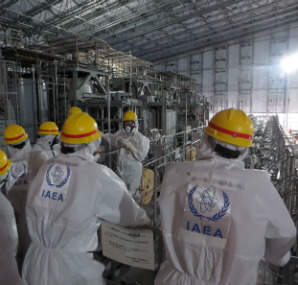TEPCO restarted two of three lines of the radionuclide removal system at Fukushima Daiichi on 24 March, but shut them down a few hours later after discovery of a small leak.The entire system was shut down last week after high levels of radiation were discovered in treated water in tests on 17 March.

TEPCO restarted two of three lines of the radionuclide removal system at Fukushima Daiichi on 24 March, but shut them down a few hours later after discovery of a small leak in a tank receving water.The entire system was shut down last week after high levels of radiation were discovered in treated water in tests on 17 March.
The EnergySolutions-supplied Advanced Liquid Processing System (ALPS) removes about 60 radionuclides by running through 16 adsorption towers. The system does not remove tritium. Two principal trains were built (A and B) with a third train (C) for backup.
On 14 March, the radioactivity of treated system B water was 110 Bq/L, comparable with the other two lines. By 17 March, it was 100,000 times greater.
Three sample tanks downstream of system B were also found to have highly-contaminated water, as was one of 21 contaminated water storage tank which are filled by system B.
Neither line A nor C was found to have reduced treatment performance, and no leaks or abnormalities were found in line B. But to prevent the spread of contamination, the entire system was shut down. The affected storage tank was isolated from its near neighbours.
TEPCO told NEI that lines A and C of the ALPS system resumed operation at around 1:00 AM (Japanese time) on 24 March, and said that the original cause of the treatment failure was related to a problem with a filter for removal of strontium.
Lines A and C were subsequently shut-down on 24 March, after detection of a small leak at a tank receiving the treated water. Currently none of the treatment lines are in operation.
Photo: IAEA visits ALPS facility, November 2013. Image from TEPCO
